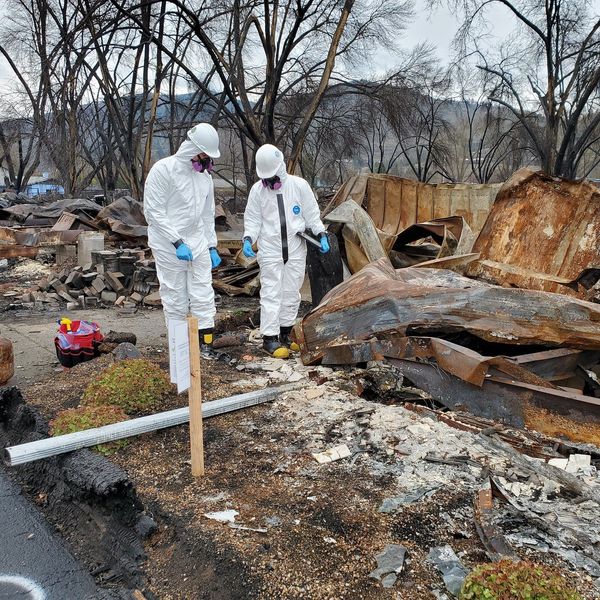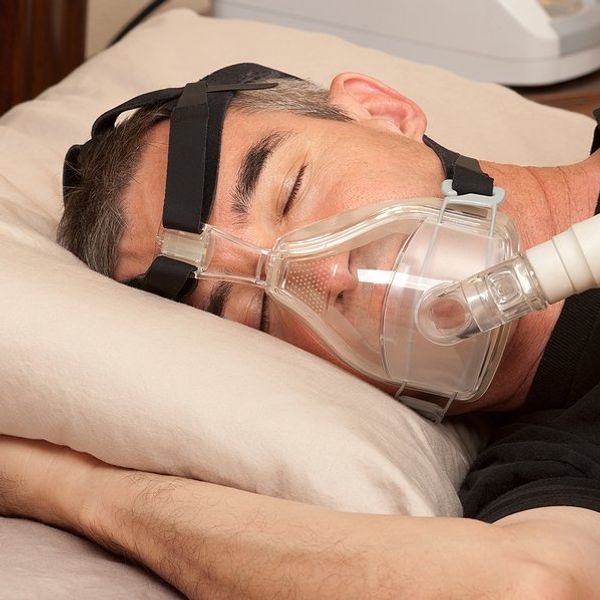When people learn they are exposed to toxic chemicals, they wonder what it means for their health and often want to take protective action.
We've heard this in our conversations with residents of PFAS-affected communities, and in their public talks—calls for medical screening to learn about potential effects on their own and their families' health. However, people exposed to PFAS often face significant hurdles in getting screened for health effects from the exposure. And that needs to change.
PFAS compounds (per- and polyfluoroalkyl substances) are a class of persistent, bioaccumulative, and toxic chemicals that are in the drinking water of an estimated 200 million U.S. residents. PFAS are especially concerning because, in the words of former director of the National Institute of Environmental Health Sciences Dr. Linda Birnbaum, they impact "development and reproduction and pretty much almost every system that you can think of."
Scientists continue to learn more about the harmful impacts to human health, regulators in some states are taking action aimed at reducing exposure including through drinking water and food packaging limits, and the U.S. Environmental Protection Agency is prioritizing PFAS policy, such as through the creation of a new "EPA Council on PFAS." However, there are still major gaps in translating knowledge about health effects linked to PFAS exposure into clinical guidance. As we learned with the lead crisis, meaningful public health protection must go beyond the removal of exposure, to include medical surveillance for those exposed because it can identify health effects and diseases early enough for treatment, which in some cases saves lives.
The importance of medical screening for PFAS
Medical screening is the testing for early signs of disease. For people who have elevated exposure to PFAS, screening for conditions associated with PFAS exposure may allow for early identification of indicators of disease.
"Medical screening is designed for earlier detection of disease, including biomarkers of disease processes, that can lead to earlier intervention and diminish the effects of exposure," Dr. Alan Ducatman, a physician, PFAS expert, and retired professor of occupational medicine, said.
In the case of PFAS, exposure is linked to a wide range of health conditions, including liver and kidney effects, damage to the immune system, several types of cancer, thyroid effects, reproductive harm, and developmental abnormalities.
Of course, medical screening is not without costs. Procedures can be expensive and are not always covered by insurance. And some procedures, such as biopsies, come with their own risks and stress to the patient.
Yet, despite the potential benefits, people who know they are exposed to high levels of PFAS often face resistance from their medical providers in proactive screening for these health conditions.
Resistance to medical screening
Environmental epidemiologist Dr. Courtney Carignan understands the importance of medical screening. She regularly turns to recommendations from the C8 Science Panel, a landmark biomonitoring and health study (documented in the film Dark Waters) of nearly 70,000 people in West Virginia near the DuPont Washington Works plant where Teflon was manufactured for decades.
In 2015, Dr. Carignan first shared those recommendations with residents of Portsmouth, New Hampshire, who have been impacted by PFAS contamination at a trade port built on the former Pease Air Force Base.
Andrea Amico, founder of the community organization Testing for Pease, said she was worried when she discovered in 2014 that her husband and children had been exposed.
"When I first learned of the contamination, I didn't even know what PFAS were. I've never heard of them before. What do they do?" Amico knew that the recommendations shared by Dr. Carignan could help her friends and neighbors facing those same questions.
But despite the potential value of medical screening for a highly exposed population like at Pease, the state of New Hampshire was not supportive and even told local physicians to ignore the medical screening recommendations that had been shared with them by the community.
This was upsetting to residents. Amico recalls that most of the people she spoke with wanted to take some kind of action.
"We can't take these chemicals out of our body, we can't undo the exposure, but we can take control moving forward. But we can't do that if our [medical] providers aren't educated," Amico said.
In another example, sympathetic academics were asked by the New York State Department of Health to review their risk communication materials on PFAS, and they pushed back strongly, telling the DOH that the agency was minimizing the known health effects.
Physicians may lack the training and knowledge to effectively support their patients, even those working in communities that have experienced documented contamination from toxic chemicals. Dr. Elizabeth Friedman, an expert in reproductive and pediatric environmental health, notes that physicians are not commonly trained in environmental health. To the extent that physicians learn about environmental health effects, most training relates to acute health problems, not long-term environmental exposures.
"This is really different because it's low dose exposure over long periods of time. It's not part of our medical training and so I think it feels foreign," said Dr. Friedman.
Medical screening may save lives

Credit: Susan G. Komen Tissue Bank at the IU Simon Cancer/flickr
Years later, Dr. Carignan's career took her to Michigan, a state that now has more than 100 known PFAS contaminated sites, where she met Sandy Wynn-Stelt.
Wynn-Stelt lived with her husband, Joel, in Belmont, Michigan, where Wolverine Worldwide dumped PFAS-contaminated sludge that contaminated the wells of the surrounding community. In 2016, after 25 years of marriage, Joel went into the hospital for a minor surgery and came out with a terminal liver cancer diagnosis. He passed away weeks later.
The following year Wynn-Stelt found out that PFAS had been contaminating her drinking water for decades. Her drinking water tested around 76,000 parts per trillion (ppt) of PFOA and PFOS, more than 1,000 times higher than the EPA's health advisory level for the two PFAS compounds. She had her blood tested right after.
She said, "my blood came out at like 5 million parts per trillion."
Meanwhile state governments began to regulate PFAS at much lower levels, showing that the EPA's level of 70 ppt doesn't adequately protect the public. Michigan now has enforceable drinking water levels of 8 ppt and 16 ppt for PFOA and PFOS in drinking water, respectively, and New Hampshire has similar maximum contaminant levels.
Unlike Amico's experience with medical providers in New Hampshire, Wynn-Stelt had much more success with medical screening. When her physician saw her exposure levels and the C8 medical screening guidance, he wanted to keep a closer eye on certain symptoms and health indicators.
As Wynn-Stelt said, her physician used this information to drive her screening and treatment, with potentially life-saving results. She was diagnosed with thyroid cancer.
"The only reason we found the cancer was because I had had the PFAS blood testing done. My doctor found some symptoms that were kind of obscure but pointed him back to thyroid, and we checked it and we followed that through," she said.
As a result, they caught her cancer early, and she had her thyroid and about 20 lymph nodes removed.
Wynn-Stelt was fortunate to have a doctor who was supportive and proactive regarding PFAS-related medical screening. She compared it to follow-through that people would receive for other health or family conditions.
"Just like a family history of diabetes is, or a history of smoking is. You know, if you smoke cigarettes it doesn't mean you're going to get lung cancer but it becomes [something] that a doctor will look at," she said.
Moving forward with PFAS medical screening
Experts agree that clear and consistent guidance on PFAS medical screening is urgently needed. This is a priority of PFAS-REACH, a research partnership between Silent Spring Institute, Northeastern University, and Michigan State University, funded by the National Institute of
Environmental Health Sciences. Working with an advisory team of scientists, physicians, and community members, they developed guidance for impacted communities and medical communities with science-based suggestions on medical screening for PFAS-exposed people.
The National Academies of Science, Engineering, and Medicine will also develop Guidance on PFAS Testing and Health Outcomes, though recommendations are likely a year away. In a series of town halls, the National Academies panel featured dozens of talks by affected residents, most of whom noted medical screening as a high priority need. Beyond earlier detection and intervention, medical screening provides other advantages according to Dr. Ducatman, including "community knowledge and empowerment."
Carignan's experience with two different outcomes from sharing the guidance, separated by six years and 900 miles, shows the clear benefits of medical screening in a highly exposed population: early detection of disease.
In Amico's words, medical screening can "give us some control."

These views do not necessarily represent those of EHN, The Daily Climate, or publisher, Environmental Health Sciences.
Banner photo: National Cancer Institute
































